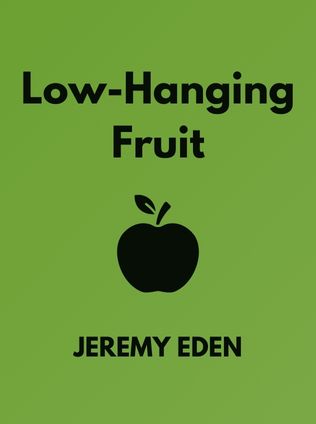
Low-Hanging Fruit
77 Eye-Opening Ways to Improve Productivity and Profits
By Jeremy Eden,
Published 03/2014
About the Authors
Jeremy Eden and Terri Long are the Co-CEOs of Harvest Earnings Group, headquartered in Chicago. They have a wealth of experience working with CEOs from a wide range of companies across various industries, guiding their teams through transformative earnings-growth processes. Their clients include well-known names like PNC Financial, H.J. Heinz, Manpower, The Schwan Food Company, Energy East, Webster Financial, and Standard Register. Eden and Long have distilled their expertise into a practical guide for achieving significant performance improvements with minimal effort, encapsulated in their book, Low-Hanging Fruit: 77 Eye-Opening Ways to Improve Productivity and Profits.
Main Idea
The central premise of Low-Hanging Fruit is that organizations often overlook simple, low-effort opportunities to enhance productivity and profitability. These opportunities, or "low-hanging fruit," are easy to implement and can lead to substantial improvements without significant risk or investment. Eden and Long identify 77 practical techniques for uncovering and leveraging these opportunities, making it clear that impactful changes don't always require massive overhauls. Instead, they advocate for a mindset shift towards recognizing and acting on these readily available improvements.
Table of Contents
- Introduction
- Seeing the Problem is Harder Than Solving the Problem
- Now That You See It, Solve It!
- Motivate Your Team to Harvest Low-Hanging Fruit
- One Company – It's Not an Impossible Dream
- Accountability: The Holy Grail!
- Need More Time? It's Easier to Find Than You Think!
- For Our C-Suite Readers
Introduction
Imagine packing for a vacation and struggling to close your suitcase because it's filled with air. In business, processes often contain similar "air" – invisible inefficiencies that take up space and hinder performance. Eden and Long's metaphor of replacing air with red sand helps visualize the need to identify and eliminate these inefficiencies. By addressing these low-hanging fruit, companies can achieve substantial improvements in productivity and profits with minimal effort and risk.
Seeing the Problem is Harder Than Solving the Problem
The first step in solving problems is recognizing them. Many issues are invisible, like the air in the suitcase, making them easy to overlook. Eden and Long emphasize the importance of acknowledging these hidden problems to effectively address them.
"If you truly believe that invisible problems surround you, you are far more likely to find ways to see them." - Jeremy Eden and Terri Long
They propose several techniques to uncover these issues:
- Put a Price Tag on Everything: Visualize the cost of every activity to prioritize solving problems that matter.
- Value Engineer Your Products: Eliminate elements that customers don't value but cost the company money.
- Ask "Why?" Five Times: Persistently asking why helps get to the root of the problem.
- Ask "How Do We Know That Is True?": Challenge assumptions to ensure actions are based on facts.
- Tag It to Bag It: Naming problems helps teams recognize and address them.
- Turn Metrics Upside Down: Focus on areas of dissatisfaction to drive improvement.
- The 80/20 Rule: Identify the small set of causes that lead to a large portion of the effect.
- Find Quick-and-Dirty Data: Use simple data collection methods to gain valuable insights.
Now That You See It, Solve It!
Once problems are identified, the next step is to solve them effectively. Eden and Long stress the importance of engaging the talent within the organization and using a structured approach to problem-solving.
"Good change does not meet resistance. What you need is a carefully designed process that engages the talent you have." - Jeremy Eden and Terri Long
Key strategies include:
- Ask the People Closest to the Work for Their Ideas: Employees often have valuable insights into solving problems.
- Get Out of Your Office and Go See for Yourself: Observing work firsthand reveals sources of waste and inefficiency.
- Stop Ignoring Your Introverts: Introverts can be crucial to problem-solving and innovation.
- Turn Complaints into Collaboration: Job swaps between departments can uncover inefficiencies and foster cooperation.
- Leverage External Insights: Vendors and new hires can provide fresh perspectives on improving processes.
- Customer Journey Mapping: Identify pain points in the customer experience to enhance satisfaction and efficiency.
- Brainstorming for Problems, Not Solutions: Use brainstorming sessions to identify issues rather than solve them.
Motivate Your Team to Harvest Low-Hanging Fruit
Motivation is a crucial element in driving the pursuit of low-hanging fruit. Eden and Long offer several approaches to inspire and energize teams.
"Good ideas come as the result of many people throughout the company trying hard to see and solve problems." - Jeremy Eden and Terri Long
Effective motivational strategies include:
Sign up for FREE and get access to 1,400+ books summaries.
You May Also Like
Rich Dad Poor Dad
What the Rich Teach Their Kids About Money - That the Poor and Middle Class Do Not!
By Robert T. KiyosakiFreakonomics
A Rogue Economist Explores the Hidden Side of Everything
By Steven D. Levitt and Stephen J. DubnerThe Life-Changing Magic of Tidying Up
The Japanese Art of Decluttering and Organizing
By Marie KondoThe Lean Startup
How Today's Entrepreneurs Use Continuous Innovation to Create Radically Successful Businesses
By Eric RiesWho Moved My Cheese?
An Amazing Way to Deal with Change in Your Work and in Your Life
By Spencer Johnson, M.D.Factfulness
Ten Reasons We're Wrong About the World – and Why Things Are Better Than You Think
By Hans Rosling



















